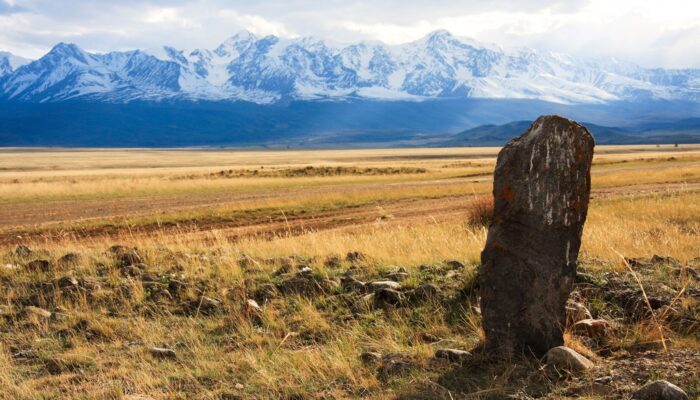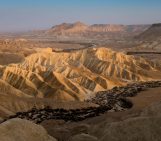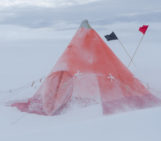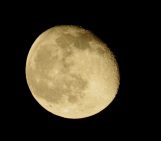
In the heart of Eurasia, an ancient stone statue overlooks the expanse of the Kurai Valley and the Altai Mountains in Russia. This relic was crafted more than a thousand years ago, sometime during the 6th or 7th century. A Turkish clan that inhabited the region, known as the First Turkic Khaganat, would often erect stones as monuments of funeral rituals.
Natalia Rudaya, who took this photograph, is a senior researcher at the Institute of Archeology and Ethnography of the Siberian Branch of the Russian Academy of Sciences. She and her research team were taking sediment cores from the bottom of Lake Teletskoye, the largest lake in the Altai Mountains, in southeastern West Siberia, close to the photograph’s location.
The lake samples give clues on how the local environment has shifted over the last couple thousand years, and how these changes might have influenced the human societies that inhabited the Altai Mountains. Investigating palaeoclimates and past vegetation shifts are also important for understanding how current climate change will affect Earth’s ecosystems.
By analysing sediment cores, Rudaya and her colleagues were able to reconstruct the region’s environmental and climatic history. Their results showed that in the beginning of the mid- to late- Holocene (roughly 4,250 years ago), the region exhibited a relatively cool and dry climate, and the land surface was dominated by Siberian pine and Siberian fir forests. However, starting around 3,900 years ago, plant populations faced significant deforestation for roughly three centuries. Then 3,600 years ago, dark coniferous mountain taiga began to extend across the territory; the sediment samples also show that this forest expansion coincided with slight increases in temperature and humidity. This climate persisted for roughly 2,000 years, then the mountainous environment faced cooler temperatures once again.
References
Rudaya, N. et al.: Quantitative reconstructions of mid- to late holocene climate and vegetation in the north-eastern altai mountains recorded in lake teletskoye, Global and Planetary Change., 141, 12-24, 2016
Huang, X. et al.: Holocene Vegetation and Climate Dynamics in the Altai Mountains and Surrounding Areas, Geophysical Research Letters, 45, 6628-6636, 2018.
Imaggeo is the EGU’s online open access geosciences image repository. All geoscientists (and others) can submit their photographs and videos to this repository and, since it is open access, these images can be used for free by scientists for their presentations or publications, by educators and the general public, and some images can even be used freely for commercial purposes. Photographers also retain full rights of use, as Imaggeo images are licensed and distributed by the EGU under a Creative Commons licence. Submit your photos at http://imaggeo.egu.eu/upload/.





arch
The picture was great
I’m photographing Sistan-Baluchistan province in Iran
How can I send my photos to you?
Olivia Trani
Hi! If you’re interested, you can submit photos to our open access image and video repository, Imaggeo. You can find more info about Imaggeo here: https://imaggeo.egu.eu/about/